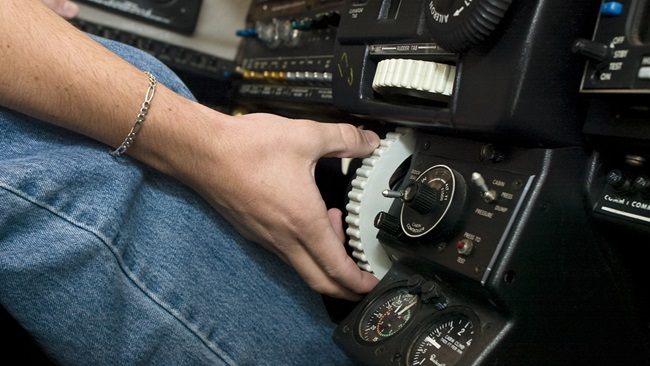
Lift, magical as it may be, isn’t perfect. What draws us into the sky also causes a few headaches for pilots. The propeller, with its rapidly spinning lifting force, is a perfect example of this. Although it creates the thrust that makes our airplanes what they are, it also creates four unwanted effects that pilots must learn to recognize and respond to.
Torque, spiraling slipstream, P-factor, and gyroscopic precession are commonly referred to as the four left-turning tendencies, because they cause either the nose of the aircraft or the wings to rotate left. Although they create the same result, each force works in a unique way.
The propeller creates the thrust that makes our airplanes what they are, but it also creates four unwanted effects that must be recognized.
Torque
To a physicist, torque is a turning force about an axis. To a pilot, torque is the force that causes an opposite rotation. As the propeller spins clockwise (as viewed from the pilot seat), the airplane experiences a rotating force in the opposite direction. In this case, that means the airplane wants to roll left, an effect that is damped by the wings. Torque increases with an increase in power.
Spiraling slipstream
Imagine a boat propeller and the vortex of water that spirals back as the boat moves forward. That’s spiraling slipstream. The propeller creates a spiral of air that spins about the airplane, eventually contacting the left side of the rudder. As power is increased and the propeller spins faster, the force on the rudder is stronger, causing more of a yawing motion to the left.
P-factor
The propeller is an airfoil, a mini “wing” that creates lift in the same way as those bolted to the fuselage. Since lift is a factor of speed and angle of attack, a greater angle of attack creates more lift. When the airplane is flying level, both blades of the propeller have the same angle of attack. But in a climb, the descending blade (right on American-made airplanes) has a higher angle of attack, which means it creates more lift. And that yaws the aircraft to the left. P-factor is especially noticeable at high power settings with a high nose attitude.
Gyroscopic precession
Precession means that a force applied to a gyroscope is manifested 90 degrees ahead in the direction of rotation. The physics required to explain it would take a page, so just trust us on that. As a rapidly rotating disc, the propeller acts like a gyroscope. When a tailwheel airplane is on the takeoff roll and the tail comes up, the propeller disc rotates forward. That’s akin to someone pushing on the top of the disc. The force results 90 degrees ahead, or on the right side, pushing the nose left. Tricycle-gear aircraft don’t experience this force nearly as much as conventional-gear aircraft do.



